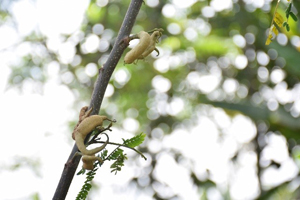 Gall rust disease in various tree species has been a long-time problem in the Philippines, especially in areas covered with forest tree plantations. To resolve this, the Philippine Council for Agriculture, Aquatic, and Natural Resources Research and Development of the Department of Science and Technology (DOST-PCAARRD) recently approved a project to prevent the spread of gall rust disease in Falcata tree species.
Gall rust disease in various tree species has been a long-time problem in the Philippines, especially in areas covered with forest tree plantations. To resolve this, the Philippine Council for Agriculture, Aquatic, and Natural Resources Research and Development of the Department of Science and Technology (DOST-PCAARRD) recently approved a project to prevent the spread of gall rust disease in Falcata tree species.
Titled, “The Use of Geospatial Analysis of Gall Rust in Falcata to determine disease occurrence in Compostela Valley, Philippines,” the project is implemented by the University of Southeastern Philippines.
Gall rust is an air-borne fungal disease caused by Uromycladium falcatarium. An infected falcata tree can spread the disease to an entire plantation when not treated immediately. Indication of the disease is the formation of “galls” or swelling on stems and branches. This results in widespread loss of leaves and other parts of the tree crown, and eventually death of the tree.
 According to Project Leader Nympha Branzuela, with the help of geospatial analysis, they will be able to assess the extent of gall rust damage and determine the influence of biophysical factors to the prevalence of gall rust in the province. The collected data can be used to establish field trial planting employing various control measures to prevent further spread of the disease.
According to Project Leader Nympha Branzuela, with the help of geospatial analysis, they will be able to assess the extent of gall rust damage and determine the influence of biophysical factors to the prevalence of gall rust in the province. The collected data can be used to establish field trial planting employing various control measures to prevent further spread of the disease.
Classified under PCAARRD’s strategic R&D banner program, the project envisions to address disease problems on falcata plantations and restore environmental conditions among forestlands/timberlands in the country. The project will run for two years and will be closely monitored by DOST-PCAARRD.
